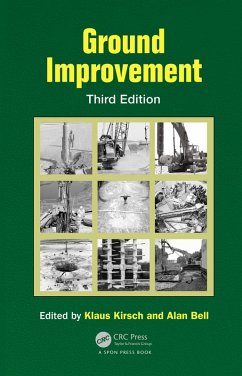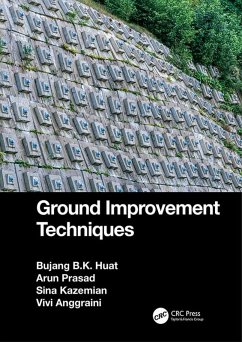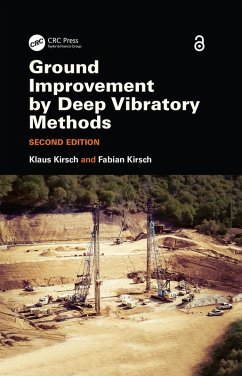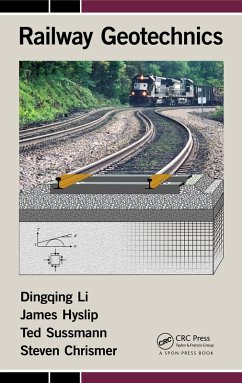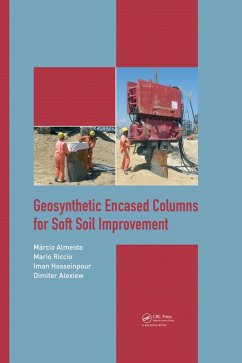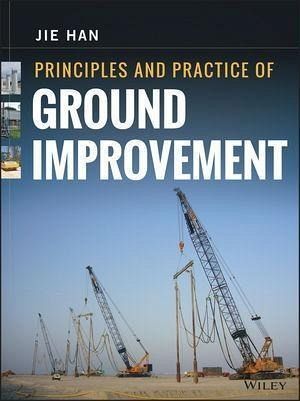
Principles and Practice of Ground Improvement (eBook, ePUB)
Versandkostenfrei!
Sofort per Download lieferbar
144,99 €
inkl. MwSt.
Weitere Ausgaben:

PAYBACK Punkte
0 °P sammeln!
Gain a stronger foundation with optimal ground improvementBefore you break ground on a new structure, you need to analyze the structure of the ground. Expert analysis and optimization of the geo-materials on your site can mean the difference between a lasting structure and a school in a sinkhole. Sometimes problematic geology is expected because of the location, but other times it's only unearthed once construction has begun. You need to be able to quickly adapt your project plan to include an improvement to unfavorable ground before the project can safely continue.Principles and Practice of G...
Gain a stronger foundation with optimal ground improvement
Before you break ground on a new structure, you need to analyze the structure of the ground. Expert analysis and optimization of the geo-materials on your site can mean the difference between a lasting structure and a school in a sinkhole. Sometimes problematic geology is expected because of the location, but other times it's only unearthed once construction has begun. You need to be able to quickly adapt your project plan to include an improvement to unfavorable ground before the project can safely continue.
Principles and Practice of Ground Improvement is the only comprehensive, up-to-date compendium of solutions to this critical aspect of civil engineering. Dr. Jie Han, registered Professional Engineer and preeminent voice in geotechnical engineering, is the ultimate guide to the methods and best practices of ground improvement. Han walks you through various ground improvement solutions and provides theoretical and practical advice for determining which technique fits each situation.
Principles and Practice of Ground Improvement can be used as a textbook, and includes Powerpoint slides for instructors. It's also a handy field reference for contractors and installers who actually implement plans. There are many ground improvement solutions out there, but there is no single right answer to every situation. Principles and Practice of Ground Improvement will give you the information you need to analyze the problem, then design and implement the best possible solution.
Before you break ground on a new structure, you need to analyze the structure of the ground. Expert analysis and optimization of the geo-materials on your site can mean the difference between a lasting structure and a school in a sinkhole. Sometimes problematic geology is expected because of the location, but other times it's only unearthed once construction has begun. You need to be able to quickly adapt your project plan to include an improvement to unfavorable ground before the project can safely continue.
Principles and Practice of Ground Improvement is the only comprehensive, up-to-date compendium of solutions to this critical aspect of civil engineering. Dr. Jie Han, registered Professional Engineer and preeminent voice in geotechnical engineering, is the ultimate guide to the methods and best practices of ground improvement. Han walks you through various ground improvement solutions and provides theoretical and practical advice for determining which technique fits each situation.
- Follow examples to find solutions to complex problems
- Complete homework problems to tackle issues that present themselves in the field
- Study design procedures for each technique to simplify field implementation
- Brush up on modern ground improvement technologies to keep abreast of all available options
Principles and Practice of Ground Improvement can be used as a textbook, and includes Powerpoint slides for instructors. It's also a handy field reference for contractors and installers who actually implement plans. There are many ground improvement solutions out there, but there is no single right answer to every situation. Principles and Practice of Ground Improvement will give you the information you need to analyze the problem, then design and implement the best possible solution.
Dieser Download kann aus rechtlichen Gründen nur mit Rechnungsadresse in D ausgeliefert werden.








